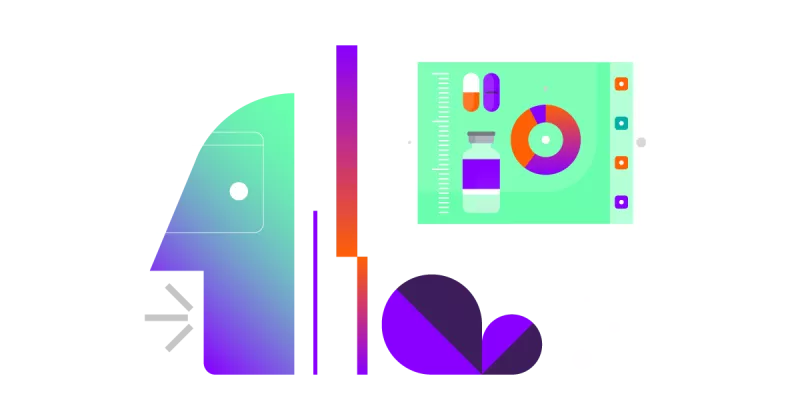Leverage risk adjustment analytics for quality care
Risk adjustment analytics provide a statistical foundation to predict a person’s likely use and costs of health care services. The methodology equates a person's health status to a number (i.e., their risk score) to predict healthcare costs.
Risk adjustment software drives this process, enabling providers to more accurately document patients’ diagnoses and health plans to capture patient risk. This ensures adequate compensation to cover care needs for beneficiaries likely to incur higher-than-average costs.
Ready to get a fuller picture with risk adjustment analytics?
Insufficient data causes unreliable risk adjustment and poor patient and provider outcomes
Diagnosis data contained in medical claims is the primary mechanism for communication between providers and health plans. It should be comprehensive of the conditions positively assessed during each visit. However, only using claims data and select chart audits gives an incomplete picture of a patient population’s disease burden. These data gaps represent missed opportunities for more accurate documentation and result in lower-quality care and lower reimbursement for provider organizations.
Utilize risk adjustment analytics to deliver a more comprehensive view of population health
Risk adjustment software leverages vast datasets to capture and analyze patient health data. With robust analytics, providers and leadership engaged in risk adjustment get a full understanding of their performance and opportunities. This drives more precise risk scores and reimbursement from payers, which can be reinvested into better patient care.

Risk adjustment analytics applications
Identify and assess suspected diagnoses at the point of care, simplify coding and documentation, and increase transparency and collaboration to close risk gaps across your network.
Healthcare Reporting for Providers
From provider reporting to efficient healthcare data analysis
Point-of-Care Insights
Find health insights at the point of care using your existing EHR workflows
Provider-Payer Collaboration
Simplify provider-payer collaboration for risk and quality gap closure
Unified SDoH data
Improve health outcomes by streamlining the way you identify populations most in need of care
How to improve risk scores with healthcare data insights
Learn how Ascension Illinois / AMITA Health ACO / CIN realized improved year-over-year risk scores and the ability to treat critical populations using data insights from Arcadia’s risk adjustment software.
Risk adjustment analytics to improve patient outcomes
A single data source with a panoramic view
The information that will accelerate your healthcare system’s success is buried right at your fingertips. Arcadia’s risk adjustment analytics unearth the most meaningful data, so your team can spend more time on what matters — using insights to drive healthier networks and healthier patients. Reach out to us to learn how we can help you accelerate insights.


